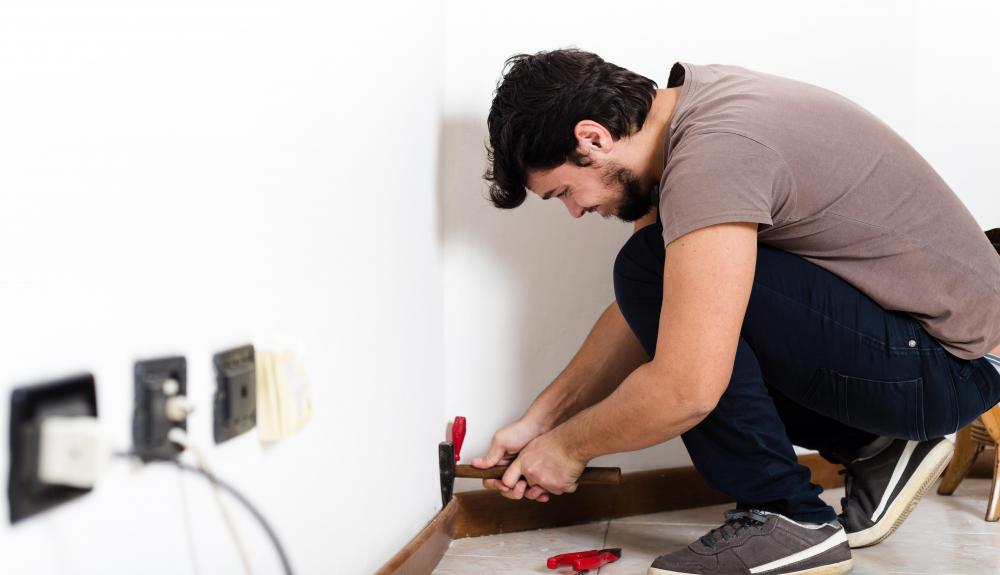At HomeQuestionsAnswered, we're committed to delivering accurate, trustworthy information. Our expert-authored content is rigorously fact-checked and sourced from credible authorities. Discover how we uphold the highest standards in providing you with reliable knowledge.
What is a Baseboard?
A baseboard is a board that covers the location where walls and floors meet. There is often a slight gap in that joint, so a baseboard covers that unsightly gap and adds an accent to the room. These boards are usually only a few inches high and are typically made from wood, though plastics can also be used. They serve a practical function beyond simply hiding a gap; they also protect the walls from kicks and damage from other objects, such as brooms or mops, striking the walls. A baseboard is similar to wainscoting, but they are distinctly different in many ways.
Wainscoting is another way to hide the gap between a floor and walls, but wainscoting is typically much higher than a baseboard. Wainscoting can be between waist and chest high, whereas baseboards are generally no higher than the top of the ankle. A baseboard is sometimes called a base molding, and it can be quite plain or highly decorative to fit the aesthetic of a room. The simplest versions of baseboards are simple strips of lumber that are either painted or stained, then nailed to the wall. More elaborate designs may be carved to add an accent to that part of the wall.

Some houses feature baseboard heating. Electric heaters are affixed to the wall where baseboards would otherwise be affixed, and they are connected to an electrical hook-up to control the level of heat. The heating elements within the heater warm up and radiate heat upward into the room. They are most often used in place of baseboards, though they can be installed on top of baseboards as well. Some designs of baseboard heaters are even made to mimic more elaborately designed baseboards to improve the aesthetic around the room.

Plastic baseboards have become commonly used in homes as well, since they tend to be much less expensive than wood and equally visually appealing. They can be glued to the wall instead of nailed, and they come in a variety of colors and styles to accommodate different room styles. Plastic will also last a long time with little or no maintenance and will not wear as quickly as wood.
Wainscoting can be used in conjunction with baseboards as well to further enhance the aesthetic of the room. Originally designed to protect the walls from the backs of chairs and to hide gaps that formed as homes expanded and contracted from season to season, wainscoting is mostly decorative today and can be made to custom sizes. The wainscoting is often constructed with tongue and groove boards.
AS FEATURED ON:
AS FEATURED ON:












Discuss this Article
Post your comments